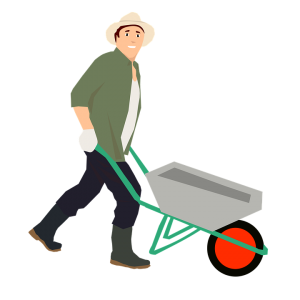
Poem Origins
First recorded as a German rhyme in 1826, the lyrics themselves demonstrate that it was used as a courtship game. A farmer starts out alone, chooses a wife, who chooses a child and so on. The individual verses seem to have varied over time, but the overall theme begins with a farmer and introduces a new relationship with each verse. The most modern version of the lyrics begin with a farmer and end with the mouse’s cheese being the last object in the poem.
Modern Variations
By 1883 in North America, the poem had been adapted into a song with a melody similar to “A Hunting We Will Go”, which is how it is commonly interpreted today. Some details of the rhyme have been changed as it has been passed around over the years. “The Farmer in the Dell” refers to a wooded valley, but in the UK, this has been changed to “The Farmer in his Den”. The ending of the rhyme has also been commonly changed. The last verse traditionally refers to the cheese, taken by the mouse, standing alone. Other versions end with the dog taking the bone, and “we all pat the bone”.
As a Classroom Game
The most common version of the game is played with all of the children (usually matching the number of verses in the song) holding hands around the “farmer”, dancing in a circle. They sing the first verse as a group and then, without looking, the “farmer” picks a child at random from the circle and has them join the center, holding hands. With each verse, the last child chosen picks at random until the center circle is larger than the outer circle, and only one child remains.
The song teaches a number of skills and lessons. Gross and fine motor skills are practiced in the act of holding hands while moving in a coordinated direction as the song progresses. It also starts building on basic logic skills as the song progresses through logical relationships. The farmer to the wife, the wife to the child, the child to the nurse, the nurse to the cow. In the cheese version of the rhyme, it ends with one child being on the outside of the group, alone. Some interpretations of it end with the dog’s bone being the last remaining child, and as a group, “we all pat the bone”.
Parents and teachers can use this as a great introduction to group activities, and take it even further by varying the lyrics specific to the group of children they are teaching. It can demonstrate any type of relationship that might want to be discussed, and is an easy way to make sure all children in the group feel included and part of the game. It also is an easy way to start conversations about the relationship between two objects. Why does the cat choose the mouse? Why does the dog choose the cat?